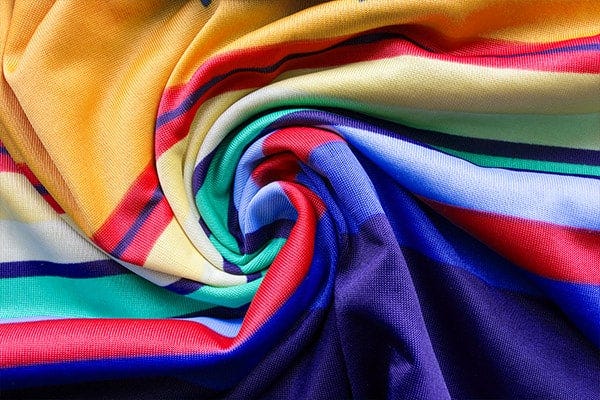With global shift to synthetic fabrics, India’s exports need a new thread

Even as the global apparel industry moves more and more towards, synthetic fabrics over natural fibers, India seems to be lagging behind. Studies have shown, the top five apparel importing countries namely the US, Germany, Japan, France, and the UK import almost 70 per cent synthetic garments and only 30 per cent natural fabric apparel.
In contrast, India's synthetic exports have been relatively stagnant. Historically, India has been known for its strength in natural fiber-based textiles, such as cotton and silk. However, changing consumer preferences and technological advancements in synthetic fiber production have put forward both challenges and opportunities for the Indian apparel industry.
Why the lag?
Several factors have hindered India's progress in the synthetic apparel export market. Technological limitations is one of them as India's textile industry has traditionally relied on labor-intensive processes, which can be less efficient for producing complex synthetic garments. There is a lack of innovation in the industry as it has been slow to adopt advanced technologies and innovative designs that are essential for competing in the global market. Also, a fragmented supply chain, including issues related to raw material sourcing, dyeing, and finishing, can hinder the timely and cost-effective production of synthetic garments.
Meanwhile, India is often associated with traditional handloom and powerloom textiles. Building a strong brand image as a global leader in synthetic apparel requires significant investments in marketing and branding. While the government has implemented various schemes and policies to promote the textile industry, more targeted support for synthetic fiber production and value addition is needed.
In fact, to capitalize on the growing global demand for synthetic apparel, India needs to adopt a strategic approach. This includes:
Technology upgradation: Invest in state-of-the-art machinery and technology to enhance production efficiency and quality.
Focus on R&D: Promoting innovation and developing new, high-performance synthetic fabrics can differentiate Indian products.
Skill development: Train the workforce in the latest techniques of synthetic fiber processing and garment manufacturing.
Supply chain integration: Foster strong partnerships with suppliers of synthetic fibers and chemicals to ensure a reliable and cost-effective supply chain.
Brand building: Create strong, internationally recognized brands that specialize in innovative and stylish synthetic apparel.
Policy support: The government should provide targeted incentives, such as tax breaks and subsidies, to promote the production of synthetic fibers and value-added textile products.
By addressing these challenges and implementing strategic initiatives, India can position itself as a major exporter of high-quality synthetic apparel, meeting the evolving needs of the global market.
